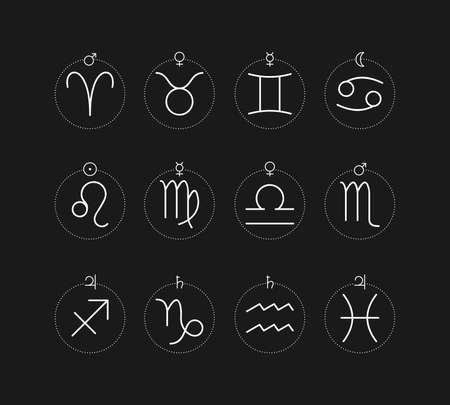Introduction: The Indian Relationship with the Sun and Oils
In the vast tapestry of Indian culture, the Sun—revered as Surya Dev—holds a place of profound spiritual and practical significance. From ancient Vedic scriptures to daily rituals in modern Indian households, Surya is honoured not only as a celestial body but as a source of life, energy, and holistic well-being. Alongside this veneration for the Sun, traditional oils such as sesame (til ka tel), coconut, and mustard have been cherished for their therapeutic properties. These oils form an integral part of Ayurvedic self-care practices, particularly in Abhyanga—the art of self-massage. Indians have long understood that sunlight and oil are more than just elements; they are sacred tools that foster harmony between body, mind, and spirit. Together, they are woven into rituals that transcend mere physical health, nurturing one’s inner vitality and connecting generations through time-honoured customs passed down from our ancestors. In this article, we journey through the ancient texts to uncover the deeper meanings behind these revered traditions and explore how their wisdom continues to shape wellness practices across India today.
2. Sun in Vedic and Ayurvedic Scriptures
The reverence for the sun, or Surya, is deeply rooted in Indian tradition and spiritual practice. Both the Vedas and Ayurveda highlight the suns vital role in nurturing life, health, and spiritual balance. In the Rigveda, Surya is lauded as the source of light, energy, and consciousness—indispensable for sustaining all forms of life on Earth. The daily ritual of Sandhyavandanam (sun salutations) remains a cornerstone of traditional Indian routine, symbolising gratitude to this celestial being.
The Sun’s Role According to Scriptures
| Scripture | Reference | Significance |
|---|---|---|
| Rigveda | Mandala 1, Hymn 50 | Praises Surya as the bringer of health and remover of darkness (ignorance/disease) |
| Atharvaveda | Sukta 13.2.16 | Describes sun’s rays as purifiers and providers of strength |
| Charaka Samhita (Ayurveda) | Sutrasthana 5/12-15 | Explains importance of sunlight for digestion, immunity, and rhythm of bodily functions (circadian rhythm) |
Cultural Practices Shaped by Sun Worship
The teachings from these scriptures have shaped everyday Indian culture. Many families begin their day with Surya Namaskar (sun salutations), while farmers time their agricultural activities according to sunrise and sunset. The concept of Dincharya (daily routine) in Ayurveda recommends exposure to early morning sunlight for optimal absorption of prana (life force). This practice is believed to enhance both physical vitality and mental clarity.
Spiritual Balance and Health Benefits
The scriptures also underscore the spiritual significance of sunlight. Meditating at sunrise is thought to balance the doshic energies—Vata, Pitta, and Kapha—restoring harmony within body and mind. Sunbathing, or Surya Snan, is recommended in ancient texts for its healing properties, particularly for skin ailments and seasonal mood fluctuations.
Thus, references from Vedic and Ayurvedic sources emphasize that aligning daily routines with the rhythms of the sun not only fosters robust health but also cultivates inner peace—a wisdom that continues to illuminate Indian life today.

3. Oils in Tradition: From Sesame to Coconut
In the tapestry of Indian tradition, oils are much more than kitchen staples; they are sacred essences imbued with health, ritual, and deep symbolism.
Cultural Importance in Indian Households
Oils like sesame (til), coconut, mustard, and ghee are revered across India’s diverse regions. Their daily use in abhyanga (therapeutic massage), cooking, and religious ceremonies is rooted in ancient beliefs about nourishment and purification. For instance, sesame oil holds a special place during festivals like Makar Sankranti and rituals such as Pitru Paksha, symbolizing longevity and respect for ancestors. Coconut oil, especially in southern India, represents purity and prosperity and is often offered to deities before being used by the family.
Selection Criteria from Scriptures
The Charaka Samhita and Sushruta Samhita—classical Ayurvedic texts—prescribe specific oils based on prakriti (individual constitution) and seasonal needs. Sesame oil is described as ‘sneha-yuktam’ (full of unctuousness), making it ideal for vata pacification, while coconut oil is cooling and suits pitta imbalances. The choice of oil is not arbitrary but guided by scriptural wisdom that aligns nature’s gifts with bodily harmony.
Symbolic Meanings of Oils
Beyond physical benefits, each oil carries symbolic weight. Sesame oil signifies stability and strength; coconut oil is linked to spiritual cleansing; mustard oil denotes protection against negative energies. Applying these oils during abhyanga is seen not just as self-care but as an act of honoring the divine within oneself—a practice handed down through generations, echoing the holistic view found in ancient Indian scriptures.
4. Abhyanga: Scriptural Wisdom and Time-Honoured Techniques
Abhyanga, the revered practice of therapeutic oil massage, holds a distinguished place in Indian tradition and wellness. Rooted deeply in ancient scriptures such as the Charaka Samhita, Sushruta Samhita, and Ashtanga Hridayam, Abhyanga is more than a daily self-care ritual—it is an embodiment of holistic health and spiritual harmony. These classical texts describe Abhyanga as an essential part of Dinacharya (daily regimen), emphasizing its role in preserving youthfulness, longevity, and equilibrium among the three doshas—Vata, Pitta, and Kapha.
Scriptural Origins of Abhyanga
The earliest references to Abhyanga are found in the Vedas and Ayurvedic treatises. According to Charaka Samhita, “Abhyangam acharet nityam” (one should practice oil massage regularly), signifying its foundational importance. The texts detail not only the application techniques but also the specific oils suitable for each dosha imbalance. The Sushruta Samhita further elaborates on the therapeutic benefits, ranging from improved blood circulation to enhanced skin texture and mental calmness.
Dosha Balance Through Massage
Abhyanga is intricately linked with the concept of dosha—the unique combination of Vata (air/space), Pitta (fire/water), and Kapha (earth/water) energies within each individual. Regular oil massage helps restore doshic balance by pacifying aggravated elements, supporting physical and emotional well-being. Below is a summary of recommended oils based on dosha types:
| Dosha Type | Recommended Oils | Main Benefits |
|---|---|---|
| Vata | Sesame oil, Almond oil | Nourishes dry skin, calms nerves |
| Pitta | Coconut oil, Sunflower oil | Cools inflammation, soothes heat |
| Kapha | Mustard oil, Olive oil | Stimulates circulation, reduces congestion |
Modern-Day Practice in Indian Families
While urban lifestyles have evolved, Abhyanga remains a cherished tradition in many Indian households—especially during seasonal transitions or significant life events like childbirth. It is common for mothers to massage infants with warm oils to promote healthy growth and immunity. Adults may indulge in weekly or bi-weekly Abhyanga sessions at home or at Ayurveda centres for rejuvenation and stress relief.
Cultural Rituals & Family Traditions
In South India, “oil bath” or “Ennai Kuliyal” is a Saturday morning ritual; in North India, mustard oil massages are popular during winter months. The act itself fosters connection—elders massaging children or spouses caring for one another. This ritualistic approach preserves not only physical health but also strengthens familial bonds and cultural continuity.
Conclusion: Timeless Relevance of Abhyanga
The scriptural wisdom behind Abhyanga continues to inspire contemporary wellness practices across India. By integrating ancient techniques into daily life—adapting oils to suit modern needs while honouring traditional methods—Indian families uphold a legacy that harmonizes body, mind, and spirit through the healing touch of medicinal oils.
5. Ancient Formulas: Recipes, Mantras, and Rituals
Classical Oil Blends from Indian Scriptures
According to the Ayurvedic texts such as the Charaka Samhita and Ashtanga Hridayam, oils are carefully chosen and blended for Abhyanga based on individual dosha types (Vata, Pitta, Kapha) and specific wellness goals. A traditional recipe includes a base oil—commonly sesame oil for its warming and grounding qualities, or coconut oil in South Indian practices for its cooling effect. Herbal infusions like Bala (Sida cordifolia), Ashwagandha (Withania somnifera), or Brahmi (Bacopa monnieri) are added to address unique imbalances. The preparation involves gently heating the base oil with herbs over a low flame while chanting mantras, believed to imbue the oil with healing vibrations.
Sample Recipe: Tridoshic Abhyanga Oil
- 500 ml cold-pressed sesame oil
- 50 g dried Ashwagandha root
- 25 g Brahmi leaves
- 1 tsp turmeric powder
Add all ingredients to the oil, simmer on low heat for 45 minutes, strain, and store in a glass bottle. This blend is referenced in many Kerala Panchakarma traditions and is suitable for all doshas.
Sacred Mantras from the Vedas and Upanishads
The scriptures often integrate sacred mantras into Abhyanga rituals to invoke divine blessings and enhance the meditative quality of touch. The Gayatri Mantra, one of India’s most revered chants from the Rig Veda (Om Bhur Bhuvah Swaha…) is frequently recited during sunrise oil application for clarity and vitality. Another popular mantra is from the Taittiriya Upanishad: “Annam Brahma”, affirming food (and by extension, oils) as sacred nourishment.
How to Incorporate Mantras:
- Sit comfortably before your Abhyanga session.
- Close your eyes and chant your chosen mantra three or nine times.
- Breathe deeply as you begin applying the oil, maintaining awareness on the mantra’s vibration through each stroke.
Stepwise Rituals: Elevating Abhyanga to Holistic Wellness
The ritual of Abhyanga goes far beyond physical therapy in Indian tradition—it is an act of self-respect (Sneha, meaning both oil and love). A typical sequence inspired by classical texts may include:
Step 1: Preparation (Poorva Karma)
Create a calm atmosphere; light incense or a diya (oil lamp), play soft devotional music or nature sounds.
Step 2: Warm Oil Application
Gently heat your herbal oil blend in a copper vessel. Test temperature against your wrist before applying.
Step 3: Self-Massage with Intention
Start at the crown of the head (Brahmarandhra) and move downward using long strokes on limbs and circular motions on joints. Apply gentle pressure according to your dosha constitution.
Step 4: Rest & Absorption (Swedana)
Sit quietly for 15–30 minutes post-massage to allow absorption. Use this time for silent meditation or mindful breathing.
Step 5: Cleansing Bath
Bathe with warm water infused with neem leaves or rose petals—both mentioned in Ayurveda for their purifying effects.
This integration of ancient recipes, mantras, and rituals transforms Abhyanga into a sacred daily practice that nourishes body, mind, and spirit in alignment with India’s timeless wisdom.
6. Practical Applications in Contemporary India
Integrating Ancient Wisdom into Urban Lifestyles
With fast-paced urban living and modern work schedules, many Indians find it challenging to adhere to traditional wellness routines. However, the teachings of Indian scriptures on the sun, oil, and Abhyanga can still be woven into daily life, ensuring cultural relevance and holistic well-being. The key lies in adapting these age-old practices to suit contemporary needs without losing their essence.
Abhyanga for the Modern Indian
Daily self-massage with oils (Abhyanga), as prescribed in the Ayurveda texts like Charaka Samhita and Sushruta Samhita, can be simplified for busy city-dwellers. Instead of a full-body massage every morning, focus on massaging vital joints—shoulders, knees, and feet—with warm sesame or coconut oil before a shower. This quick ritual preserves the scriptural benefits: improved circulation, reduced stress, and nourished skin.
Sunlight Exposure in Urban Settings
Scriptures often reference Surya Namaskar (sun salutation) and early morning sun exposure for optimal health. In apartments or offices where open spaces are limited, adapt by practicing Surya Namaskar near a sunlit window or on a balcony during sunrise. Even 10-15 minutes of mindful sunlight exposure helps regulate sleep cycles and boosts vitamin D levels—a need recognized both by ancient rishis and modern doctors.
Nutritional Oils in Daily Diets
The Vedas mention the use of ghee and cold-pressed oils for internal nourishment. While deep-fried foods are best avoided in today’s context, incorporating a teaspoon of pure ghee or cold-pressed oils like mustard or groundnut into dal, sabzi, or chapati can provide essential fatty acids that support brain function and joint health. This aligns with both scriptural wisdom and nutritional science.
Sustaining Tradition through Community & Ritual
Festivals such as Makar Sankranti (celebrating the suns journey northward) or ritualistic Abhyanga Snan during Diwali offer opportunities to reconnect with these practices communally. Even in metropolitan cities like Mumbai or Bengaluru, families can revive these customs together—strengthening cultural bonds while nurturing body and spirit.
Conclusion: Timeless Relevance for Modern India
By respectfully adapting the core messages from Indian scriptures on the sun, oil, and Abhyanga, today’s urban Indians can maintain their heritage while promoting wellness. Small daily rituals—rooted in ancient formulas yet tailored for modern convenience—help bridge tradition and contemporary life, proving that true well-being is timeless.

